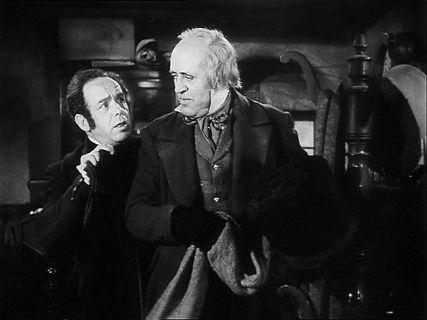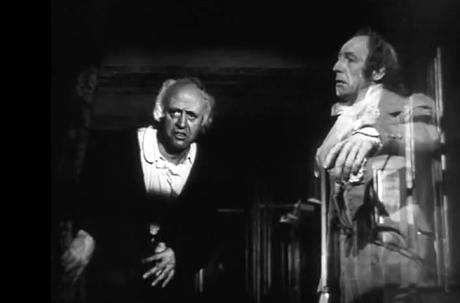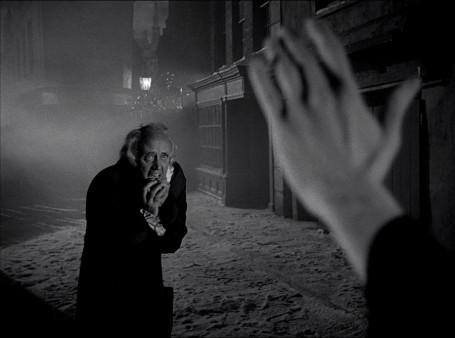Ever since Charles Dickens' classic Christmas story completely changed the way people  viewed the holiday it has been adapted into a number of different mediums. Needless to say that also includes having a Christmas Carol brought to the big screen a number of times. There have been; silent versions, animated versions, and even a version with the Muppets. But one take on a Christmas Carol (or Scrooge as it is known to international audiences) is still cited as the definitive take on the classic. In 1951, Scottish character actor, Alastair Sim brought Ebenezer Scrooge to life and endeared the character and story to generations which followed.
viewed the holiday it has been adapted into a number of different mediums. Needless to say that also includes having a Christmas Carol brought to the big screen a number of times. There have been; silent versions, animated versions, and even a version with the Muppets. But one take on a Christmas Carol (or Scrooge as it is known to international audiences) is still cited as the definitive take on the classic. In 1951, Scottish character actor, Alastair Sim brought Ebenezer Scrooge to life and endeared the character and story to generations which followed.
The story as everyone knows by now is about the cruel businessman Ebenezer Scrooge. A man made bitter towards his fellow man by years of pursuing wealth over anything meaningful. However on Christmas Eve, the ghost of his old business partner comes to him with a warning to change his ways or an eternity of suffering awaits. To this end three spirits visit Scrooge throughout the night. The Ghost of Christmas Past shows him the life he has lead thus far, and what molded him into the man he is now. The Ghost of Christmas Present shows him the joy and warmth he is missing by cutting his friends and family out of his life. And despite his actions and attitude those in his life like; Bob Cratchit and his nephew still hold him in high regards on this special day. The final and

When watching this film you can not help but feel an ominous sense of foreboding which still holds up six decades later. The dark and industrialized world of Victorian London is perfectly constructed for the screen in a way which is both believable yet stylized. Director Brian Desmond Hurst truly captures a moody tone with this classic where even the happier moments we see have a certain dreariness to them. The supernatural

The film is carried to perfection by veteran actor Alastair Sim in the lead role. The result we get is that he turns in one of finest performances of his storied career. Like so many others who have played the greedy Ebenezer he spends much of the film as a cold and uncaring businessman. But when he transforms after a night of haunting, a warmth and joy he had been hiding all along radiates from the man. You would almost swear that he was playing two completely different characters. It is that turn in his portrayal of Scrooge which showcases his redemption is more than superficial that many actors

A Christmas Carol still persists as a holiday classic even today among modern audiences. True it may be sixty years old and based off of source material even older than that, the themes explored of wealthy disparity and redemption are timeless. This take on the classic tale in particular seems to still be used as the measuring stick by which all other Dickens adaptations are measured by.

